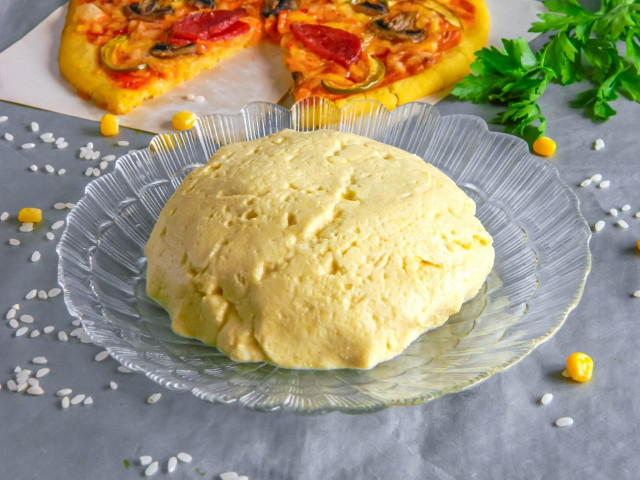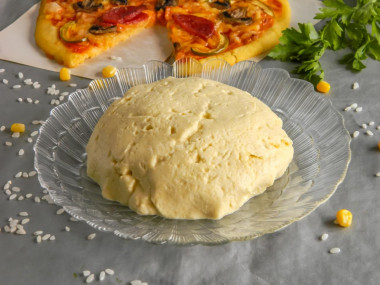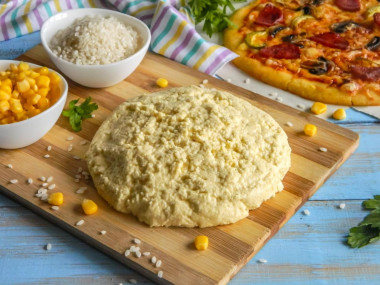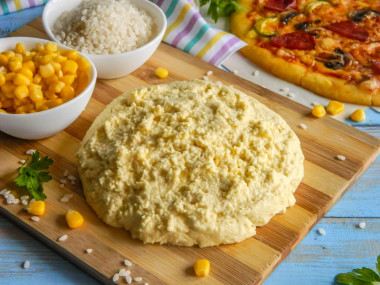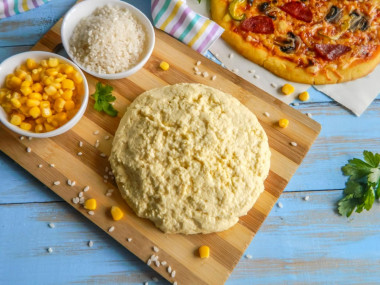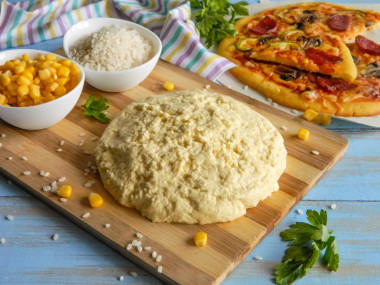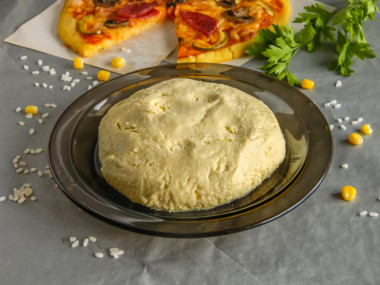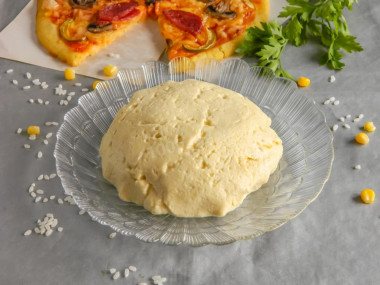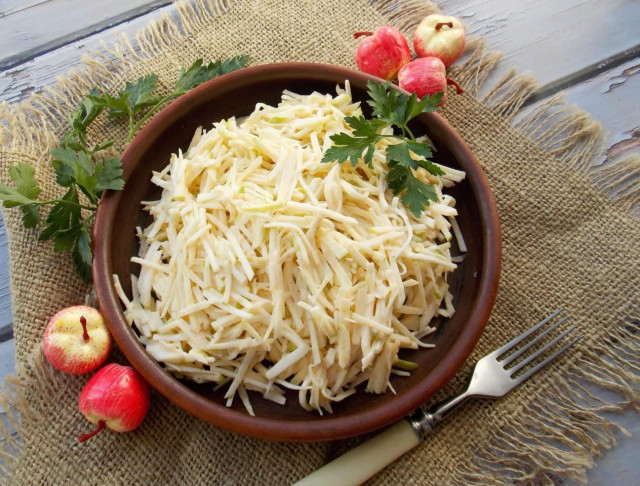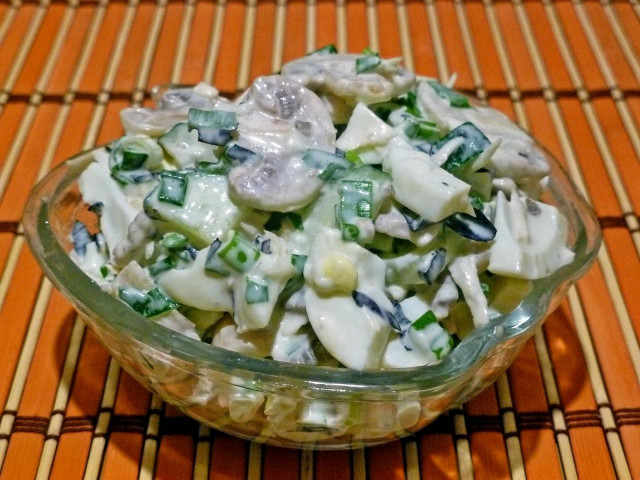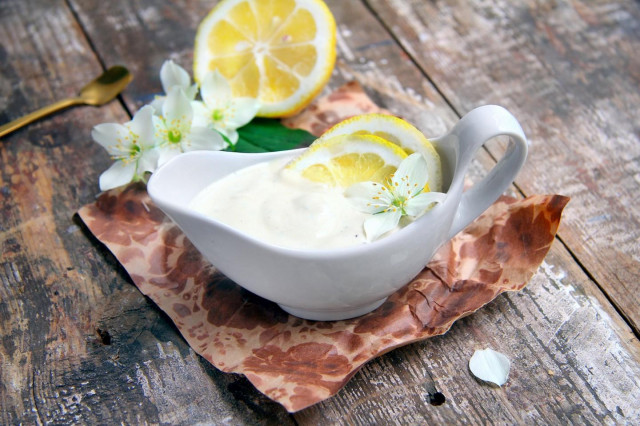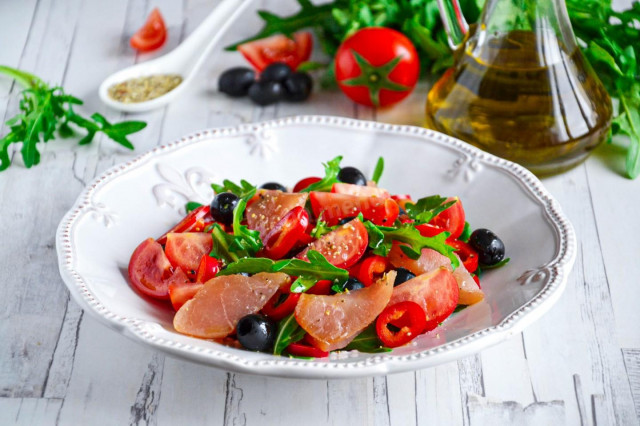Composition / ingredients
Step-by-step cooking
Step 1:
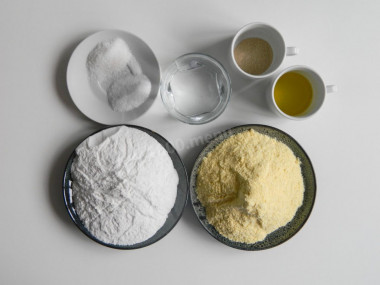
How to make gluten-free pizza dough? Prepare all the necessary products. Rice and corn flour is easier to buy ready-made, since it takes a long time to make it yourself in a coffee grinder. Instead of olive oil, you can take another vegetable oil to your taste.
Step 2:
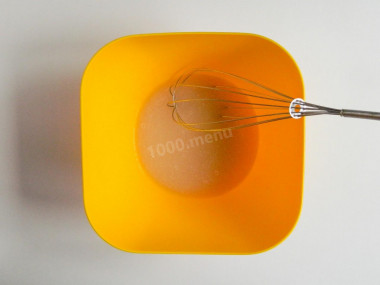
To knead the dough, take a deep bowl in which it will be convenient to mix dry and liquid ingredients. In warm water (37-40°C) add sugar, salt and yeast. Stir with a spoon until completely dissolved. In the absence of a special cooking thermometer, the required temperature can be determined in the following way: you need to drop a drop of water on the inside of the wrist. If the feeling is neutral - not cold and not hot, then the temperature is correct.
Step 3:
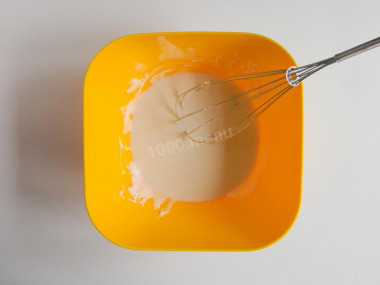
If the temperature is too low, the yeast will work slower and it will take longer to cook. At elevated temperatures, the yeast will die and the dough will not rise. Add a spoonful of vegetable oil and stir thoroughly. Add rice flour and mix until smooth.
Step 4:
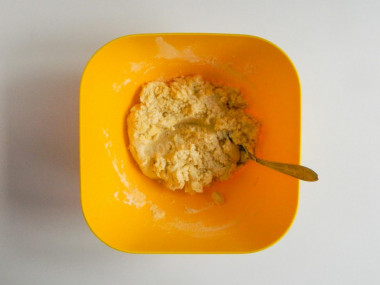
Then gradually add corn flour, kneading the dough. The dough is not elastic compared to the dough made of flour with gluten and does not hold its shape, as if it falls apart. That's how it should be. The main thing is that it should not be dry.
Step 5:
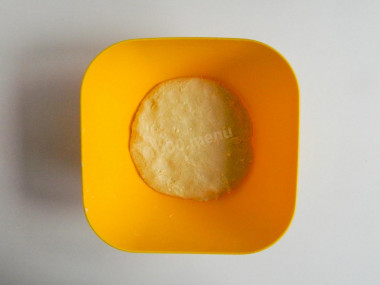
Knead the dough with your hands for 10 minutes. Then lubricate the hands, bottom and sides of the bowl with vegetable oil so that the dough does not stick. Assemble the dough into a lump.
Step 6:
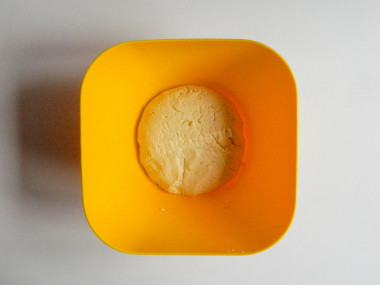
Cover the dough with cling film or a damp towel and put it in a warm place for 1-1.5 hours. In order for the dough to be successful, it must be in a warm place with high humidity. When the dough has risen, cracks have appeared on it, you can work with it. From this amount of dough, you can cook 2 medium pizzas.
Step 7:
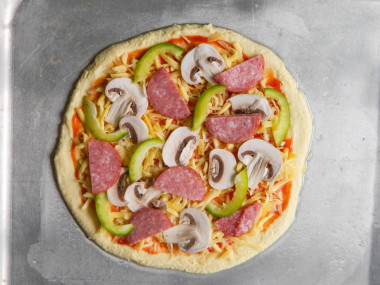
The dough is very tender, so it is better to distribute it on a baking tray with your hands. Be sure to lubricate the baking sheet or baking paper with oil. Before putting the pizza in the oven, leave it for half an hour for proofing. So the dough will be more lush. The temperature regime is the same as that of a traditional pizza dough.
Instead of sugar, you can use a sweetener that is not afraid of heat treatment.
Important! Using dry yeast, it should be borne in mind that they occur in two forms: active and instant (read the instructions carefully before use!).
Active dry yeast looks like beads or small balls. Before applying them, they must be brought out of "sleep mode". To do this, the active yeast is diluted in warm sweet water, milk or whey. The resulting bubbles, foam or "cap" indicate that the yeast is ready for further use. Active dry yeast must be brought to complete dissolution in the liquid, otherwise, due to the remaining grains, the dough may not rise and the baking will be spoiled (yeast grains that have not dissolved in the liquid and got into the dough will not disperse on their own, which means they will not work).
Instant dry yeast is easier to use. They do not need to be activated before use. Such yeast, along with other ingredients, is simply added to the dough. As a result, the baking time is reduced.
It should also be remembered that both types of dry yeast may differ in their activity from different manufacturers.
Caloric content of the products possible in the composition of the dish
- Granulated sugar - 398 kcal/100g
- Sugar - 398 kcal/100g
- Salt - 0 kcal/100g
- Water - 0 kcal/100g
- Olive oil - 913 kcal/100g
- Corn flour - 368 kcal/100g
- Whole grain corn flour, unseeded - 355 kcal/100g
- Whole grain corn flour sifted - 362 kcal/100g
- Corn flour from grain with removed germs of vitamin E - 364 kcal/100g
- Corn flour from grain with removed germs nevitaminiz - 364 kcal/100g
- Rice flour - 356 kcal/100g
- Dry yeast - 410 kcal/100g

